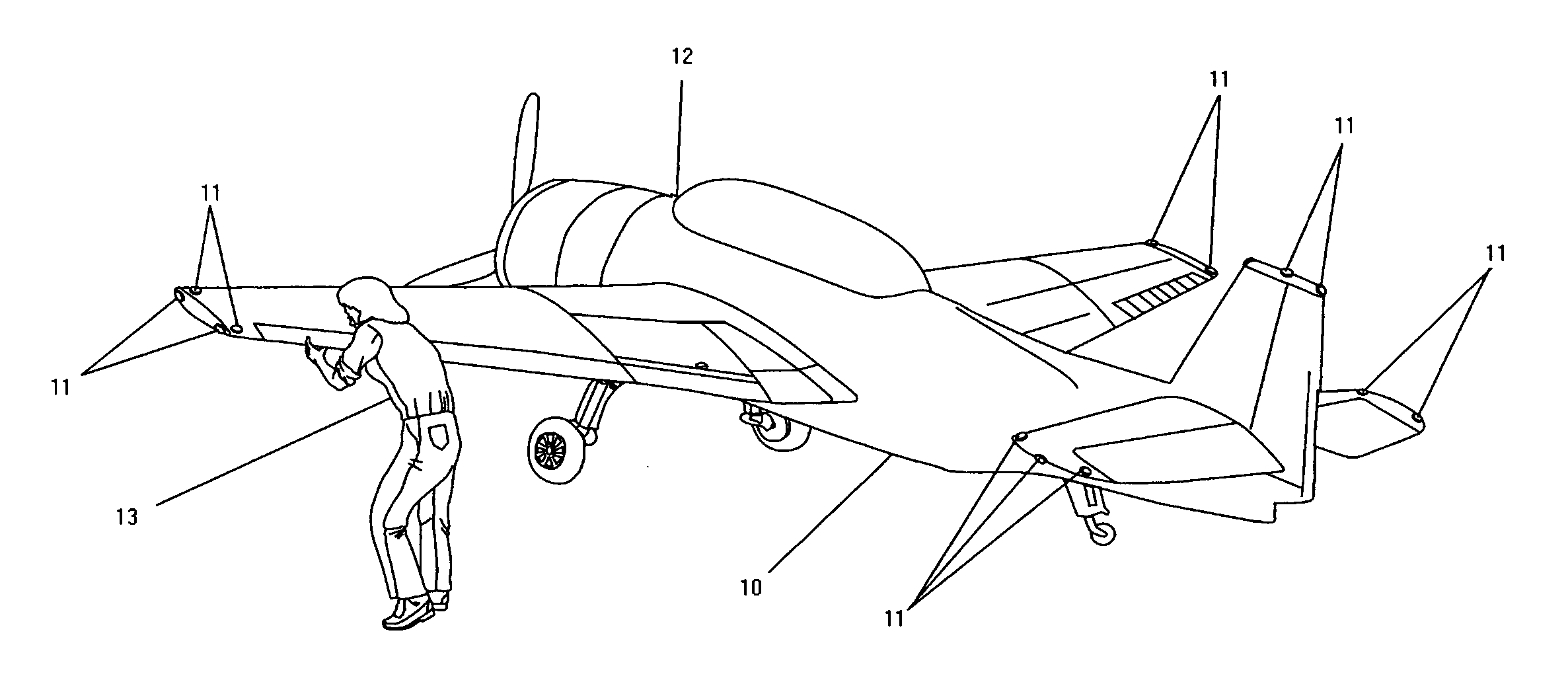Object proximity warning system
a proximity warning and object technology, applied in the field of objects proximity warning systems, can solve the problems of difficult maneuverability of vehicles in crowded locations, difficulty in maintaining constant surveillance of all such exposed parts at the same time, and frequent damage to vehicles that are stationary or parked
- Summary
- Abstract
- Description
- Claims
- Application Information
AI Technical Summary
Benefits of technology
Problems solved by technology
Method used
Image
Examples
Embodiment Construction
[0027] The Object Proximity Warning System of the present invention comprises one or more distance-determining sensors together with display and alerting means responsive to said sensors to provide information to the operator of a subject vehicle with respect to the closeness of approach of the subject vehicle to an object, or the closeness of approach of another vehicle to the subject vehicle. In active embodiments of the present invention, said sensors will be comprised in a subject vehicle, and will provide information to the operator of the vehicle, or to the operators of other vehicles moving in the vicinity of the subject vehicle, with respect to the closeness of approach of the vehicle to virtually any object. In passive embodiments, said sensor or sensors will be comprised in objects with which a vehicle might collide, and will provide information to vehicle operators with respect to closeness of approach to virtually any vehicle.
[0028] In other embodiments, the Object Prox...
PUM
 Login to View More
Login to View More Abstract
Description
Claims
Application Information
 Login to View More
Login to View More - R&D
- Intellectual Property
- Life Sciences
- Materials
- Tech Scout
- Unparalleled Data Quality
- Higher Quality Content
- 60% Fewer Hallucinations
Browse by: Latest US Patents, China's latest patents, Technical Efficacy Thesaurus, Application Domain, Technology Topic, Popular Technical Reports.
© 2025 PatSnap. All rights reserved.Legal|Privacy policy|Modern Slavery Act Transparency Statement|Sitemap|About US| Contact US: help@patsnap.com


